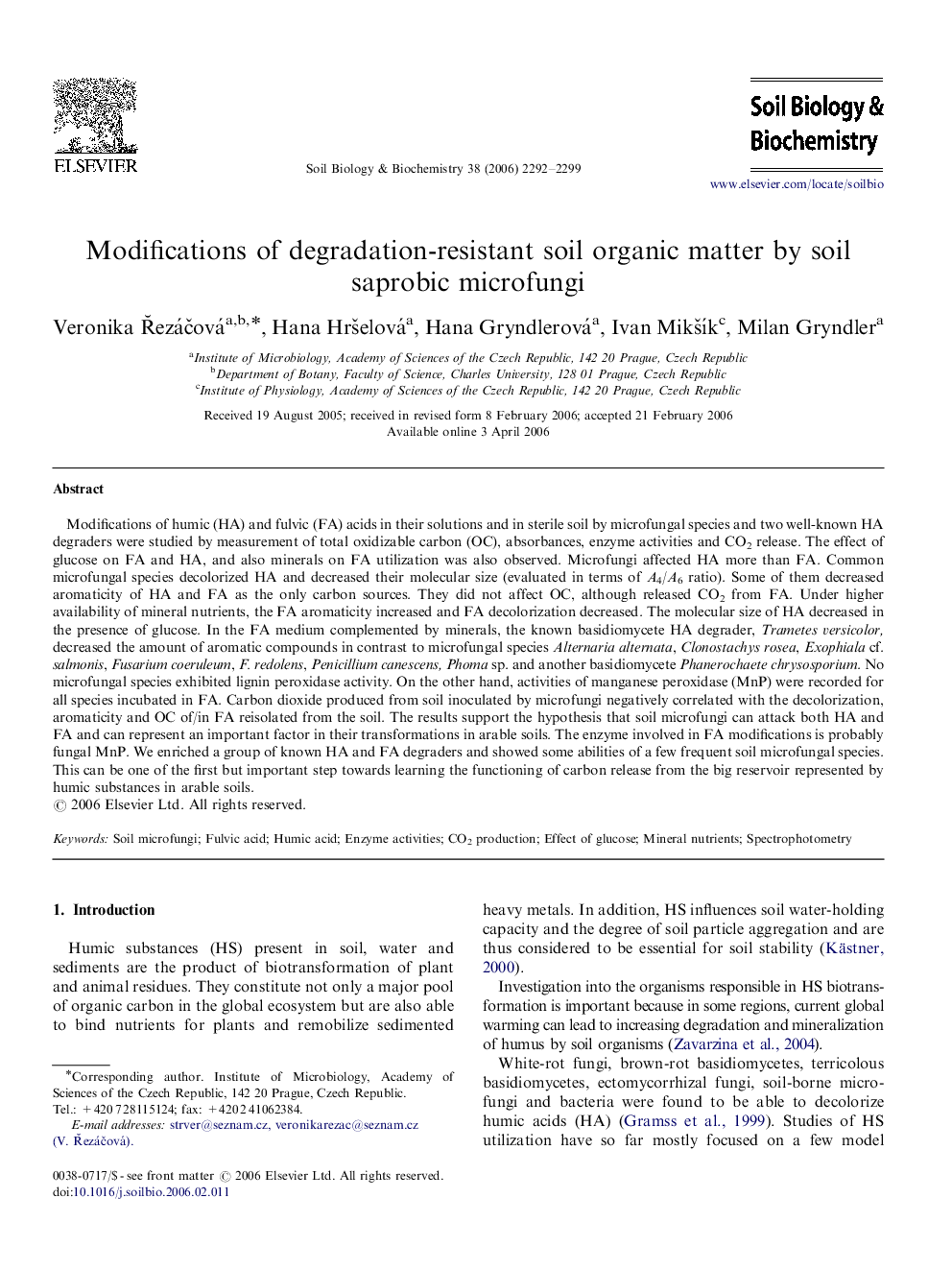| Article ID | Journal | Published Year | Pages | File Type |
|---|---|---|---|---|
| 2027195 | Soil Biology and Biochemistry | 2006 | 8 Pages |
Modifications of humic (HA) and fulvic (FA) acids in their solutions and in sterile soil by microfungal species and two well-known HA degraders were studied by measurement of total oxidizable carbon (OC), absorbances, enzyme activities and CO2 release. The effect of glucose on FA and HA, and also minerals on FA utilization was also observed. Microfungi affected HA more than FA. Common microfungal species decolorized HA and decreased their molecular size (evaluated in terms of A4/A6 ratio). Some of them decreased aromaticity of HA and FA as the only carbon sources. They did not affect OC, although released CO2 from FA. Under higher availability of mineral nutrients, the FA aromaticity increased and FA decolorization decreased. The molecular size of HA decreased in the presence of glucose. In the FA medium complemented by minerals, the known basidiomycete HA degrader, Trametes versicolor, decreased the amount of aromatic compounds in contrast to microfungal species Alternaria alternata, Clonostachys rosea, Exophiala cf. salmonis, Fusarium coeruleum, F. redolens, Penicillium canescens, Phoma sp. and another basidiomycete Phanerochaete chrysosporium. No microfungal species exhibited lignin peroxidase activity. On the other hand, activities of manganese peroxidase (MnP) were recorded for all species incubated in FA. Carbon dioxide produced from soil inoculated by microfungi negatively correlated with the decolorization, aromaticity and OC of/in FA reisolated from the soil. The results support the hypothesis that soil microfungi can attack both HA and FA and can represent an important factor in their transformations in arable soils. The enzyme involved in FA modifications is probably fungal MnP. We enriched a group of known HA and FA degraders and showed some abilities of a few frequent soil microfungal species. This can be one of the first but important step towards learning the functioning of carbon release from the big reservoir represented by humic substances in arable soils.
